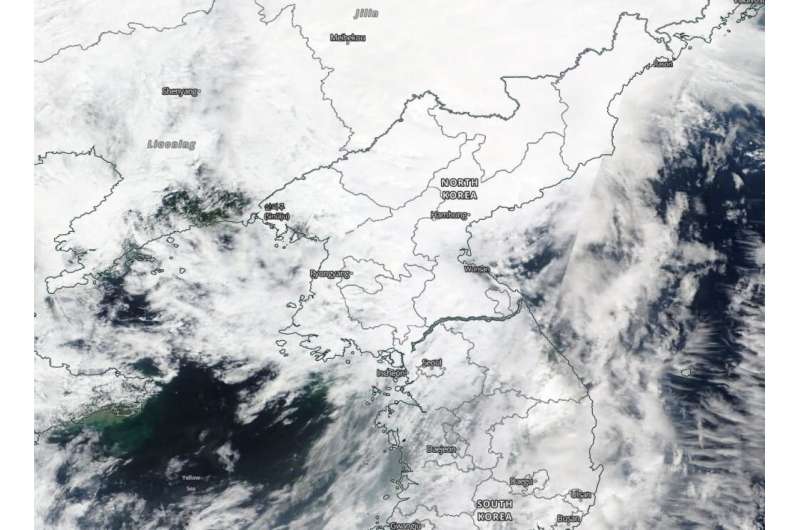NASA’s Terra satellite provided a visible image to forecasters of Tropical Storm Bavi after it made landfall in northwestern North Korea on Aug. 27 and began moving into China. Image Courtesy: NASA Worldview, Earth Observing System Data and Information System (EOSDIS).
NASA's Terra satellite captured visible imagery as Tropical Storm Bavi made landfall in northwestern North Korea and moved inland.
The Moderate Resolution Imaging Spectroradiometer or MODIS instrument that flies aboard NASA's Terra satellite captured a visible image of Tropical Storm Bavi on Aug. 27. The image showed an almost shapeless tropical storm moving over North Korea and into China.
The final warning from the Joint Typhoon Warning Center was issued at 5 a.m. EDT (0900 UTC) on Aug. 27. At the time, it was located near latitude 41.6 degrees north and longitude 125.8 degrees east, about 249 nautical miles north of Inchon, South Korea. Bavi had weakened to a tropical storm with maximum sustained winds near 40 knots (46 mph/74 kph). It was moving to the north-northeast.
Bavi is quickly becoming extra-tropical after making landfall and is now moving across northeastern China.
When a storm becomes extra-tropical, it means that a tropical cyclone has lost its "tropical" characteristics. The National Hurricane Center defines "extra-tropical" as a transition that implies both poleward displacement (meaning it moves toward the north or south pole) of the cyclone and the conversion of the cyclone's primary energy source from the release of latent heat of condensation to baroclinic (the temperature contrast between warm and cold air masses) processes. It is important to note that cyclones can become extratropical and still retain winds of hurricane or tropical storm force.
Provided by NASA's Goddard Space Flight Center
























